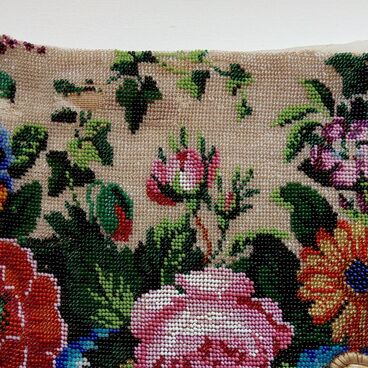The first cigar holders or mouthpieces (from German Mundstück — meaning ‘a part designed to be put in or against the mouth’) appeared in the Middle East, where hookahs were very popular: tips made of wood or metal were attached onto the long hoses of hookahs. Whereas in Europe, a separate smoking accessory was called a mouthpiece or a cigar holder — a hollow pipe, in one end of which a lighted cigar was placed, and the other end was brought to the lips.
A mouthpiece protected the smoker’s fingers that could be easily stained with tobacco tar, which gave the skin a specific color and odor. In addition, it was used to reduce the strength of tobacco, softening and lightening its taste.
When cigarettes did not have filters, a mouthpiece was a special kind of holder, in which cigarettes were inserted. In this case, the mouthpiece trapped tobacco crumbs to prevent them from entering the mouth.
The mouthpiece became a decorative element in the 19th century, when emancipated women introduced the fashion for smoking. An exquisite mouthpiece protected their light silk gloves, fingers and manicure. Such accessories were richly decorated with carvings, and sometimes even inlaid with precious stones. Men, on the other hand, used simpler and more practical mouthpieces, convenient for storing and everyday use. In the 1960s and 1970s, mouthpieces for women completely fell out of use, while shorter ones for men remained part of the daily life of a small number of smokers.
Mouthpieces were made of expensive materials such as mahogany, inlaid precious metals, bone, or amber. Since the end of the 19th century, amber, which has bactericidal properties, has been used for the manufacture of a wide variety of smoking accessories: pipes, chibouks, mouthpieces and cigarette cases. It is believed that amber mouthpieces reduce the harm of smoking: succinic acid captures and neutralizes carcinogenic substances.
Mouthpieces were often made of sea foam — meerschaum — a white porous material, the main deposits of which were in Turkey. Foam mouthpieces and pipes have been known since the 19th century. Over time they slowly change color from white to golden-brown.
A mouthpiece protected the smoker’s fingers that could be easily stained with tobacco tar, which gave the skin a specific color and odor. In addition, it was used to reduce the strength of tobacco, softening and lightening its taste.
When cigarettes did not have filters, a mouthpiece was a special kind of holder, in which cigarettes were inserted. In this case, the mouthpiece trapped tobacco crumbs to prevent them from entering the mouth.
The mouthpiece became a decorative element in the 19th century, when emancipated women introduced the fashion for smoking. An exquisite mouthpiece protected their light silk gloves, fingers and manicure. Such accessories were richly decorated with carvings, and sometimes even inlaid with precious stones. Men, on the other hand, used simpler and more practical mouthpieces, convenient for storing and everyday use. In the 1960s and 1970s, mouthpieces for women completely fell out of use, while shorter ones for men remained part of the daily life of a small number of smokers.
Mouthpieces were made of expensive materials such as mahogany, inlaid precious metals, bone, or amber. Since the end of the 19th century, amber, which has bactericidal properties, has been used for the manufacture of a wide variety of smoking accessories: pipes, chibouks, mouthpieces and cigarette cases. It is believed that amber mouthpieces reduce the harm of smoking: succinic acid captures and neutralizes carcinogenic substances.
Mouthpieces were often made of sea foam — meerschaum — a white porous material, the main deposits of which were in Turkey. Foam mouthpieces and pipes have been known since the 19th century. Over time they slowly change color from white to golden-brown.



